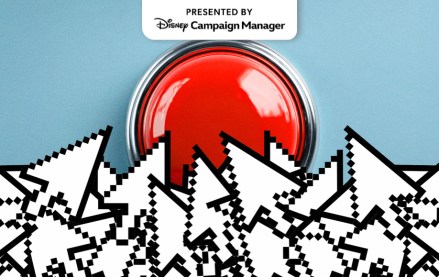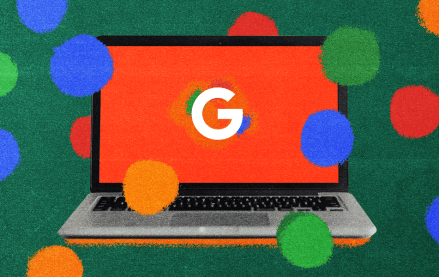Join us Oct. 15-17 in Phoenix to connect with top media buyers
‘People’s BS detectors are high’: Brands have given consumers cause fatigue

In the run-up to Earth Day last year, Megan Marshall and her team at Olson Chicago sat facing executives from one of the biggest consumer brands and held an intervention: The brand wanted to tie an Earth Day event into its veteran’s charity. Marshall balked. Customers had reached peak cause fatigue.
“A lot of brands think, ‘let’s tie in with a day like Earth Day, do an event, donate money or just do a clean-up,’” she said. “But consumers see through those kind of stunts now, and besides, what does their charity toward educating veterans have to do with beverages or Earth Day?”
Viral movements like the “Ice Bucket Challenge” and #BlackLivesMatter remind us that the Internet is a powerful driver of activism. Innumerable studies have highlighted that customers — especially of the much-maligned cohort between the ages of 18 and 34 that marketers like to lump together as an undifferentiated, annoying blob — prefer brands to be aligned with some sort of progressive cause. And brands, being brands, have been happy to oblige.
Almost too happy, it turns out. When every brand starts fighting for a piece of the social good pie — allying with causes that have nothing to do with their core business — there remains no semblance of authenticity. So many brands have started engaging in some form of cause marketing or another, that consumers have become increasingly wary. Most cause marketing efforts appear to be desperate at best — and flat-out dishonest at worst.
“There has been a shift in perception among customers of what an authentic expression of a brand is,” said Max Lenderman, CEO of cause-marketing specialist agency, School. “And jumping on a cause is increasingly being viewed as not authentic.”
Catering to a new audience
Young consumers have been painted with a broad marketing brush. They tend to be more progressive than previous generations, we’re told. They care about the environment and social issues like same-sex marriage, expecting brands to give back to society. They are far more likely to favor brands that support their local communities and global issues than their competitors.
Three-quarters of the respondents to Elite Daily’s 2015 Millennial Consumer Study, for example, said that it’s either fairly or very important that a company gives back to society instead of just making a profit. Brands have assumed they have a mandate to glom onto a range of issues, from LGBT rights to bullying.
In 2015 alone, Coca-Cola, launched its #MakeItHappy campaign, which attempted to combat cyber bullying by encouraging positivity and asking people to share the “happiness” of Coca-Cola. Doritos partnered with the It Gets Better Project and took out a special rainbow-colored packet in support of LBGT communities. And just this month, MAC partnered with Caitlyn Jenner to launch a special lipstick with proceeds going to its HIV AIDS Fund’s Transgender Initiative.
“Brands have to be like verbs: There has to be visible action,” said Lenderman. “But consumers today are sophisticated enough to see when love is being bought. You’re not making anyone ‘happy’ with soda water and diabetes — and consumers can see through that.”
As a study by San Francisco agency Traction found, consumers are increasingly skeptical of companies using cause marketing to push products. Companies may get some initial PR buzz but won’t carve a permanent space in people’s hearts and minds. Nearly half (41 percent) of the survey’s respondents at least somewhat agreed that cause marketing is “just spin,” and a full 25 percent are already annoyed by it. “Social media has ensured that people’s BS detectors are high,” said Adam Kleinberg, CEO of Traction.
There are, of course, companies that have some kind of cause as a core tenet of the brand from its beginning. Patagonia’s value proposition has always been to make quality products in a more environmentally responsible way. It has frequently encouraged its customers to consider the costs of over-production and consumption, for instance, through its Worn Wear program, where it teaches consumers how to fix their “tired, well-loved clothing” and encourages them to share their stories on social media. This may seem like counterproductive for a for-profit brand, but the brand said in 2015 that it was on track to have the most profitable year in its history, with expected sales reaching $750 million.
“Every brand has a corporate social responsibility initiative, but that doesn’t mean it should be furthered as a marketing opportunity,” said Traction’s Kleinberg. “You just have to put your money where your mouth is, and the the consumers will see that.”
The major missteps
Last March, Starbucks faced significant consumer backlash when it launched an initiative in which its baristas were told to start conversations about race with customers waiting in line. While perhaps well-intentioned, the announcement rubbed many the wrong way. On Twitter, many questioned why Starbucks felt the need to insert itself into a conversation as fraught as race relations in America.
Customer: I’ll have a venti light roast…
Race conscious Starbucks barista: Don’t you mean (removes sunglasses) Martin Luther King size?— Erin Gloria Ryan (@morninggloria) March 17, 2015
“While they probably had good intentions, it just didn’t feel right,” said Jamie Gutfreund, CMO at Wunderman. “And that’s because brands need to realize that when something is a seminal cultural moment, it tends to have a momentum that they can’t control. It’s not about them, and it comes off as opportunistic.”
Not every brand gets it totally wrong, of course. Dove’s #RealBeauty campaign has been heralded as a pioneering example of cause marketing done right. For an industry that trades on superficiality (and insecurity), preaching empowerment strikes some — like Jia Tolentino, deputy editor at Jezebel — as particularly disingenuous. The brand’s sales have risen by $1.5 billion, sure, but on the back of a slogan “cooked up by executives who noticed that few women like to call themselves beautiful and saw in that tragic modesty a great opportunity to raise the profile of the Dove brand,” she wrote this week.
With that success come imitators. Other brands, eager to replicate Dove’s buzz have climbed onto the empowerment bandwagon, from American Eagle’s lingerie brand Aerie to Lane Bryant — both of which have been actively preaching body positivity. The term “plus-size” has become such a buzzword — overused and saturated — that it is beginning to lose meaning. Glamour magazine recently came under fire by Amy Schumer for implying she was plus-size, showing her name alongside Melissa McCarthy, Adele and Ashley Graham on a cover. Plus-size in America is a size 16; Schumer hovers between a size 6 and an 8.
“I think there’s nothing wrong with being plus size,” Schumer wrote on Instagram, adding the fact that Glamour had “put me in their plus size only issue without asking or letting me know and it doesn’t feel right to me.”
The gap between a brand that has had some kind of cause woven into its DNA and a brand that is just bandwagoning is glaringly obvious, said Jonathan Schoenberg, partner and ECD at TDA Boulder. “Consumers are painfully aware when brands try to own movements; it’s just not believable.”
According to the latest data from the Cassandra Report, younger generations have been turned off by marketing in general and are consuming less. Nearly 90 percent of those surveyed in the U.S. and the U.K. want to reduce consumption and “a majority of millennials” are trying to distance themselves from marketing to avoid purchasing unnecessary goods.
The path ahead
The common criticism of cause marketing: It is simply too heavy on the marketing. But that’s normally because few companies truly embrace causes throughout the organization. Dove parent company Unilever has embraced the cause of sustainability in an all-encompassing way: All of the company’s operations, not just its marketing, are focused on sustainability.
David Hessekiel, president of the Cause Marketing Forum acknowledges that while there still may be some “lousy, lowest-common-denominator, highly promotional, short-term and opportunistic branded cause marketing efforts,” they have come a long way since the initial days “when every brand was for breast cancer awareness and everything was plastered with a pink ribbon.”
For him, even when Starbucks failed while attempting to address the race issue, it demonstrated a tremendous concern for society and actual willingness to try to do something about it. “The pendulum has swung in the direction of greater depth,” he said.
In other words, don’t expect an end to cause marketing any time soon. A handful of agencies have launched cause-focused divisions in the past one year. Deep Focus launched Deep Impact, which helps companies identify pertinent issues and connects brands with nonprofits “to create and activate robust, creative programs.” And 72andSunny has its “Brand Citizenship” practice to help brands make doing good a central part of their marketing.
“With every passing day, it’s getting harder and harder to pull the wool over people’s eyes by trying to create meaningful brand love with disconnected causes — as it should,” said Jim Moriarty, director of Brand Citizenship. “We all crave authenticity. Brands can and should change the world. And the best way to do that is to initiate, support and amplify causes that are connected to the brand’s business and mission.”
More in Marketing

Advertising Week Briefing: Podcast industry juggles using AI tools with maintaining medium’s intimacy
AI is having a transformative impact on content and advertising, and the audio space is no different.

Future of Marketing Briefing: Sora’s promise — and peril — for the creator economy
Yes, this is another Sora story. But this one’s less about the tech and more about what it’s doing to the people behind it

Tea in the courtroom: the gossipier side of the remedies trial over Google’s ad tech monopoly
Here’s a rundown of the gossipy sub plots and quiet power plays that emerged from the courtroom.





